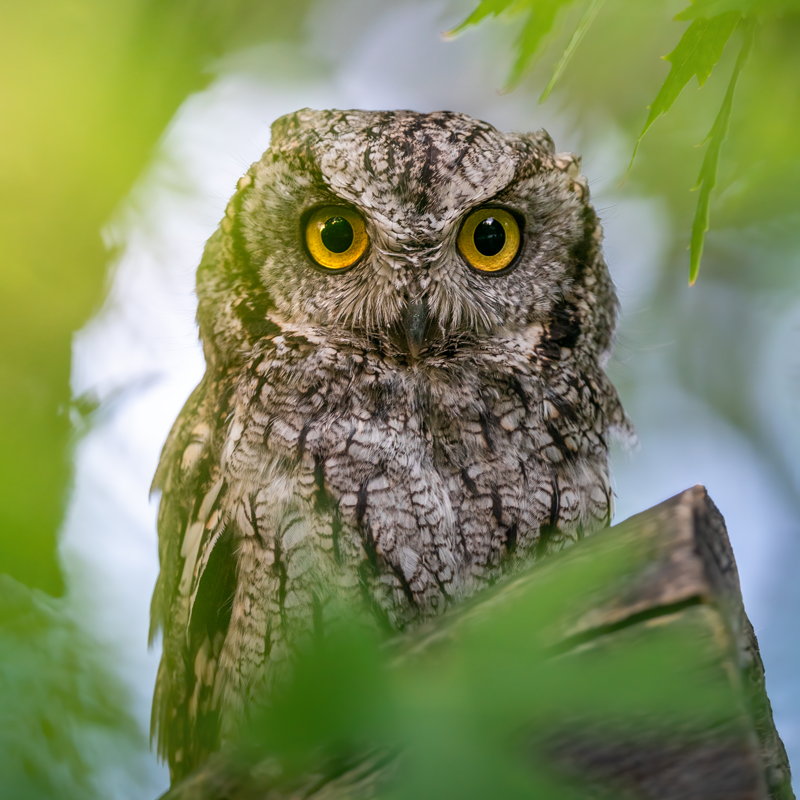Photographing birds and other wildlife is my obsession. Here are some things I’ve learned while indulging my wildlife photography addiction that enrich the experience:
Subject
Get to know your subject. Study its habitat, habits, behaviors, etc. Want to photograph owls? Figure out when they are active, and where they like to roost. Want a photo of elk in the rut? Study up on the time of year and the locations where they display this behavior.

Work to find animals that are tolerant of humans. Each individual is different. Some spook quickly, and others don’t care if you’re there, watching them eat and play. Finding the individual with the right personality is key in getting the shot.
Always respect the animals. If you can tell the critter is uncomfortable, back off. The animal is more important than your photo. And keep yourself safe, too. That big old grizzly bear looks great from a safe distance!
Network
Networking is so important in wildlife photography. Knowing when and where to find animals takes years of work. Other photographers can help you be successful, and you can help them in return. Get to know local photographers. Be friendly, be kind. No matter how much you know, you will always learn something new from every person you meet if you can let go of your ego and listen. If you’re new to wildlife photography, find someone who is experienced and respected to be your mentor.

Be courteous when others are shooting. If other photographers are standing back, giving the critter space, don’t be the one who charges in, spooking it and ruining it for everyone. You don’t want to be known as that guy!
Not only will networking help you become a better photographer but as you get to know others who share your passion, you’ll make some of the best friends of your whole life. I promise!
Editing
Getting the photo is only half the battle. If you really want to have a great picture, you need to post-process. Shoot in RAW format. It allows you to edit better. Learn to use Lightroom and Photoshop. They are your best friends! They’re really not that hard to use. Watch YouTube tutorials, and talk to photographers who have a style you like. They can help you get your shots to look the way you want. I always learn so much every time I watch another photographer edit pictures.

Be careful! Don’t over-process your photos. You’re shooting nature when you photograph animals, after all. So let them look natural. That saturation slider is tempting, I know. Resist the urge.
Time
Patience. Patience. Patience. I can’t say it enough. You want a shot of that gorgeous bird posing nicely? Then I hope you’re OK with sitting outside for hours on end, in all kinds of weather, with all kinds of bugs!

Of course there are times when you’re lucky, and that critter you want to photograph sits pretty for you, right when you arrive at the location. But that’s unusual. To get the shot you’re after, plan to spend a lot of time looking, waiting, hoping, and striking out over and over. It’s the name of the game with wildlife photography. But the time and effort you put in to get the shot makes it that much more rewarding!
Gear
When photographing wildlife, birds in particular, speed is essential. Fast autofocus, fast shutter, the ability to change settings on the fly; speed is key! Wildlife usually only give you a few seconds to get your shot. You have to be ready, and fast. I love the Sony A9 for this reason. With 20 fps, incredible autofocus, and great ISO capability, it’s unbeatable for accurate speed.

The Sony A9 is also an ideal wildlife camera because it’s fully customizable. You have to know your gear well or you’ll fail. When photographing animals, you don’t get to plan out your photoshoots. You don’t get to set up the shot. You don’t get to try again if you miss the shot. Consequently, the ability to assign the buttons on my A9 to different functions based on my style of shooting and ergonomic needs help me to capture the shot successfully.
Most of all, have fun! Photographing wildlife is so rewarding. Get out there in nature and enjoy!
Get to know more about Lydia Ripplinger below:
Follow her on Instagram


